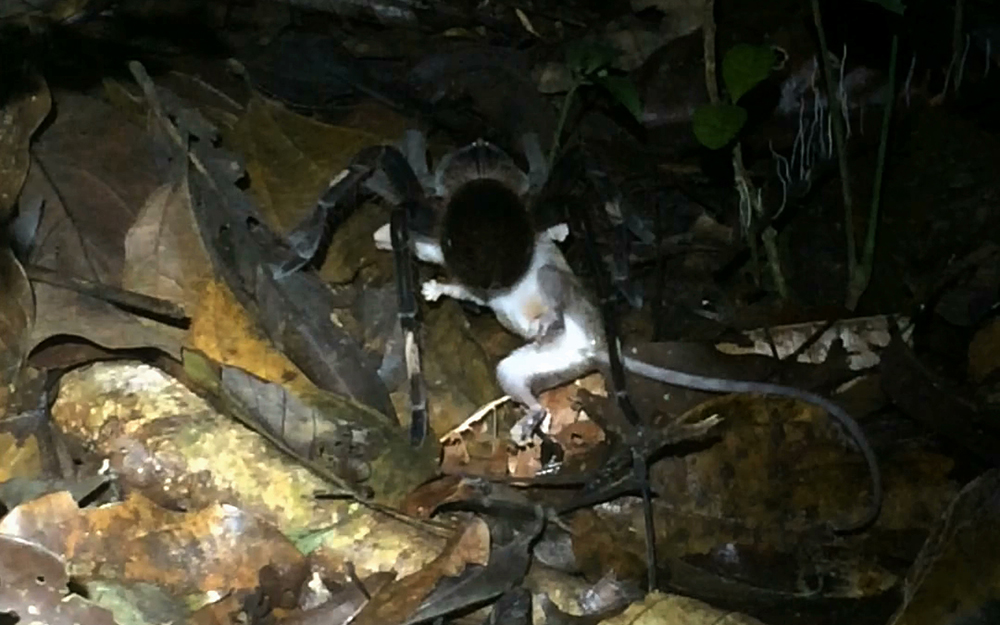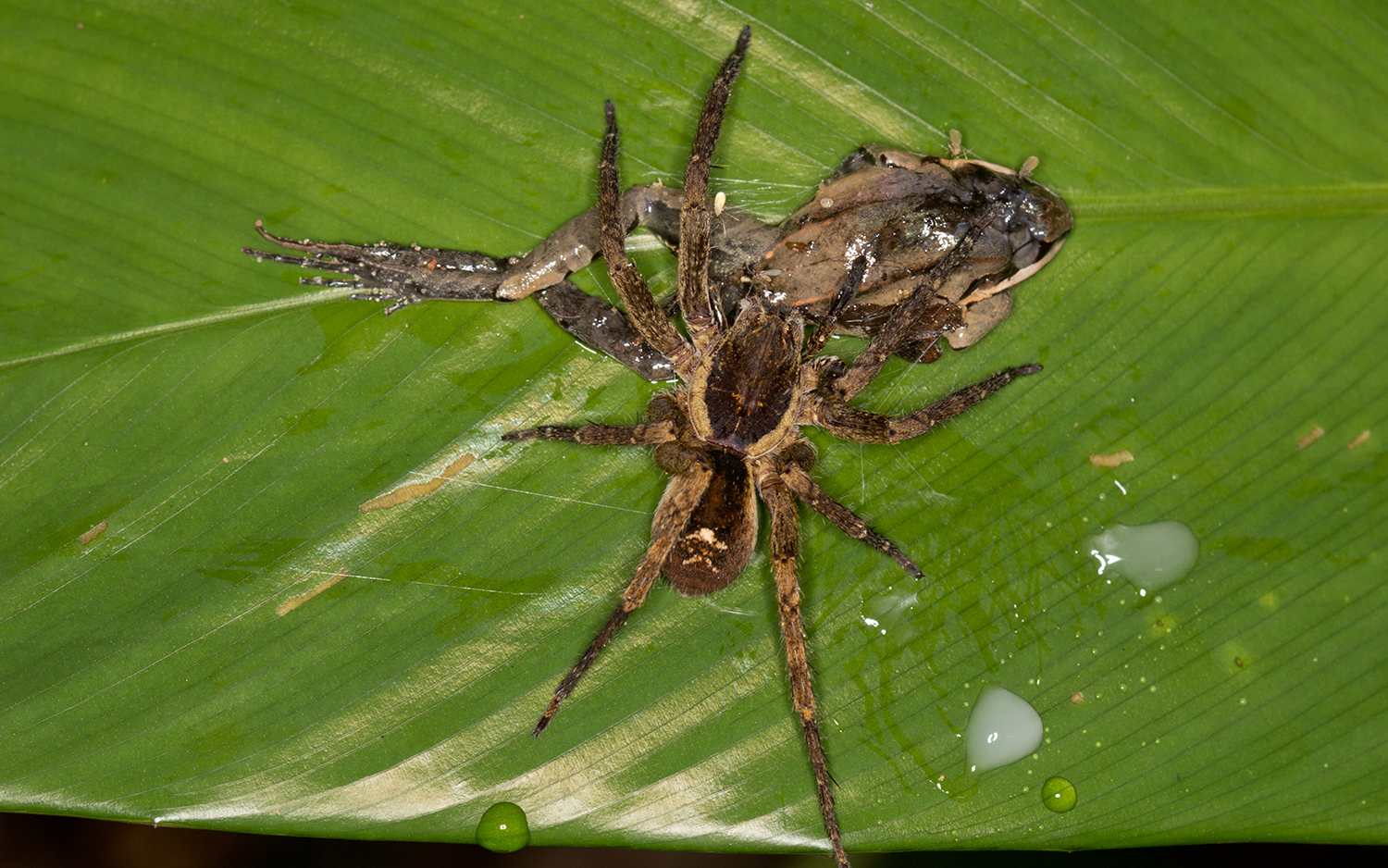Tropical Spiders Cause 'Surprising Amount of Death,' Hunting Opossums, Frogs and More

For small animals in the tropics, spiders and their arthropod cousins are responsible for "a surprising amount of death," scientists recently discovered.
Researchers captured gruesome photos of the spiders' hunting prowess in the Peruvian Amazon, revealing in a new study that the arachnids regularly dine on frogs, fish, lizards and even small mammals.
Large tropical spiders are known to hunt vertebrates — animals with backbones — but this is the first study to collect observations of these predators in a region over time. The scientists also recorded the first evidence of a tarantula clutching one particularly unexpected victim: a young mouse opossum (Marmosops noctivagus) that was about the same size as the spider, a species in the Pamphobeteus genus. [In Photos: A Tarantula-Eat-Snake World]
Spiders and other arthropods that prey on vertebrates tend to have special adaptations to subdue their wriggly, muscular dinners, such as modified jaws, enlarged chelicerae — claws in front of their mouths — and powerful venom, the researchers wrote in the study.
Photos taken by the researchers documented multiple species of spiders and other arthropods (a group that includes spiders, insects and crustaceans) — such as a giant water bug and several centipede species — as they sank their mandibles deep into their prey. The study authors described 15 interactions captured in night surveys that took place during expeditions to southeastern Peru's Madre de Dios region in 2008, 2012, 2016 and 2017, according to the study.
"In a single night survey, it's fairly common to see between three and five predator-prey interactions," lead study author Rudolf von May, a postdoctoral research fellow in the Department of Ecology and Evolutionary Biology at the University of Michigan (UM), told Live Science in an email.
"The most common interaction we see is spiders eating other invertebrate prey such as crickets and moths," von May said. But vertebrate prey was also on the menu, the scientists reported. In one instance, a centipede was consuming a juvenile snake while it was still alive (the scientists humanely euthanized the snake after the centipede abandoned it).
Sign up for the Live Science daily newsletter now
Get the world’s most fascinating discoveries delivered straight to your inbox.

These observations suggest that arthropods are "a major source of mortality" for small vertebrates, said study co-author Dan Rabosky, an associate professor of herpetology at UM and a curator at the UM Museum of Zoology.
Why does that matter? Scientists need a clear picture of how species interact in order to understand and protect fragile ecosystems that are increasingly at risk from human activity and climate change, Rabosky said.
"We're trying to collect data as frantically as we can to at least get a snapshot of what's going on now, so we can understand future impacts," he said.
The findings were published online today (Feb. 28) in the journal Amphibian and Reptile Conservation.
- In Photos: Tarantulas Strut Their Stuff
- Goliath Birdeater: Images of a Colossal Spider
- In Photos: The Amazing Arachnids of the World
Originally published on Live Science.

Mindy Weisberger is an editor at Scholastic and a former Live Science channel editor and senior writer. She has reported on general science, covering climate change, paleontology, biology and space. Mindy studied film at Columbia University; prior to Live Science she produced, wrote and directed media for the American Museum of Natural History in New York City. Her videos about dinosaurs, astrophysics, biodiversity and evolution appear in museums and science centers worldwide, earning awards such as the CINE Golden Eagle and the Communicator Award of Excellence. Her writing has also appeared in Scientific American, The Washington Post and How It Works Magazine. Her book "Rise of the Zombie Bugs: The Surprising Science of Parasitic Mind Control" will be published in spring 2025 by Johns Hopkins University Press.









